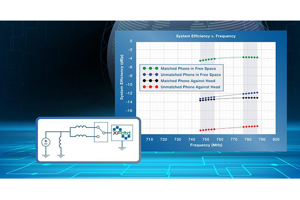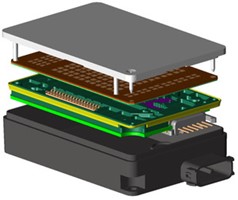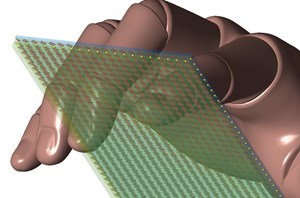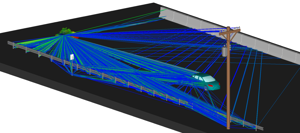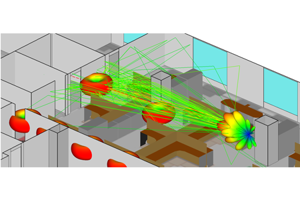EM Simulation
PRODUCTS AND SERVICES
Wind turbines located near a radar installation can significantly interfere with the ability of the radar to operate properly. Remcom provides radar scattering expertise for government-funded research efforts into the impact that wind turbines and wind farms have on radar returns for Air Traffic Control (ATC) radar, early warning radar, weather radar, and instrumentation radar.
Remcom’s XFdtd EM Simulation Software offers unique capabilities to help engineers navigate antenna design challenges with speed and accuracy.
Design requirements for 24 GHz and 77 GHz automotive radar sensors are becoming more stringent as consumers increase demand for applications like blind spot detection (BSD) and lane change assistance (LCA). In turn, the engineering departments at Tier 1 suppliers like Delphi, Autoliv, and Continental are advancing technology in order to win bids from OEMs like BMW, Audi, and Chrysler.
Simulation technology has also advanced to meet design requirements. Remcom offers an integrated approach from sensor design to drive test scenarios.
XFdtd can compute the capacitance of complex sensor designs, allowing the designer to choose the best geometry for their needs without prototyping.
WaveFarer® is a high fidelity radar simulator that accounts for multipath and scattering from structures and vehicles in the immediate environment of a radar system as well as key atmospheric and scattering effects for frequencies up to and beyond 100 GHz.
Determining the final set of component values in a matching network can be a challenging process. Traditionally, RF engineers have had to simplify and idealize their matching circuits in schematics that are separated from the EM simulation. This simplification into a lumped element schematic requires perfect grounds and leaves out the coupling and transmission line effects of the interconnect metal and the antennas.
Wireless InSite® is a predictive tool for understanding wireless coverage, channel multipath, and data throughput for 5G, 6G, and WiFi networks.
XF leverages the EM principle of superposition to quickly analyze port phase combinations with a single simulation.

